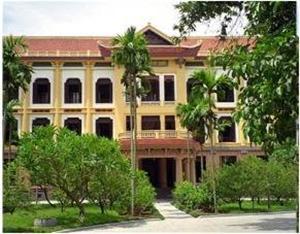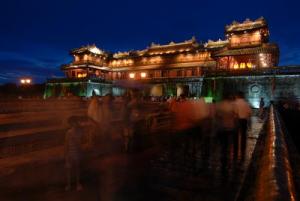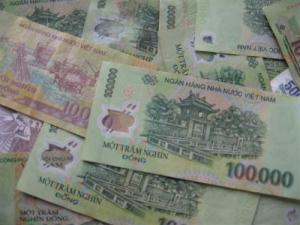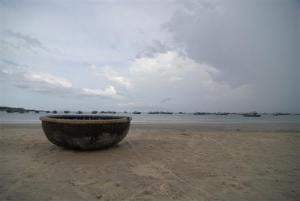Fine Arts Museum

The Vietnam National Fine Arts Museum (Bảo tàng Mỹ Thuật Việt Nam, admission 20,000 Dong) is located in Nguyen Thai Hoc Street, Hanoi.
It has become a prime tourist destination, since the museum exhibits in great detail the history of fine arts in Vietnam displaying comprehensive collections with more than 2,000 items. This museum aims to be a cultural and educational institution. It is linked with the Ministry of Culture and Information responsible for restoring, conserving, and exhibiting contemporary artwork as well as ancient materials and objects in Vietnam. The museum is attracting a growing number of visitors both for its value in historical collections and the building's artistic architecture. In 1930, the museum's original structure was built and used as a boarding house for French girls in Indochina (the old name of the former French colony) while studying in Hanoi.
After that, on June 26, 1966, the building officially served as what it is today, exhibiting fine arts with on a total area of 4,200 square metres. At present time the museum and its branch at Hoang Chau Street in Hanoi are contributing to broadening the image of Vietnamese culture and art among foreign tourists. The Fine Arts Museum in Hanoi is a classical building in structure and form even though it was transformed into a Vietnamese design with many decorations and details from traditional architecture. The interior structure consists of Western elements. The collections from ancient antiquities to contemporary art are on display within the museum’s two wings, on three floors. The oldest artefacts including the valuable sandstone sculptures of the Champ and Funan kingdoms and the elegantly carved Amitabha Buddha image produced around 1057, can be found on the ground floor of the main wing.
Later works include a huge lacquered wooden Bodhisattva sculpture dating from the sixteenth century, with many arms, each of them holding a symbolic item. The rich collection of lacquer fine art and its evolution in Vietnam are considered to be the main attraction by some visitors. Stepping on the first floor visitors can immerse into the world of ancient legends with Vietnamese kings and queens depicted as Buddhist deities in the sculptures. They are all delicate and highly refined examples of the use of lacquer in carvings. The remarkable “One Thousand Eyes, One Thousand Arms Guan Yin”, one of the largest and most impressive pieces, can be found here. It is the symbol of a Chinese goddess with many arms on her body and backed by a large disk carved according to the art of Hindu style in 1647. In the last room on the first floor, there are some Buddha images in different styles from the late eighteenth century.
The newer wing has water colors in Chinese style on the first floor and colourful costumes as well as decorative art from Vietnamese ethnic groups on the second floor. Suggestion: The Vietnam Fine Arts Museum being located just across the street from the Temple of Literature, a visit can nicely be combined with a look around the temple.









